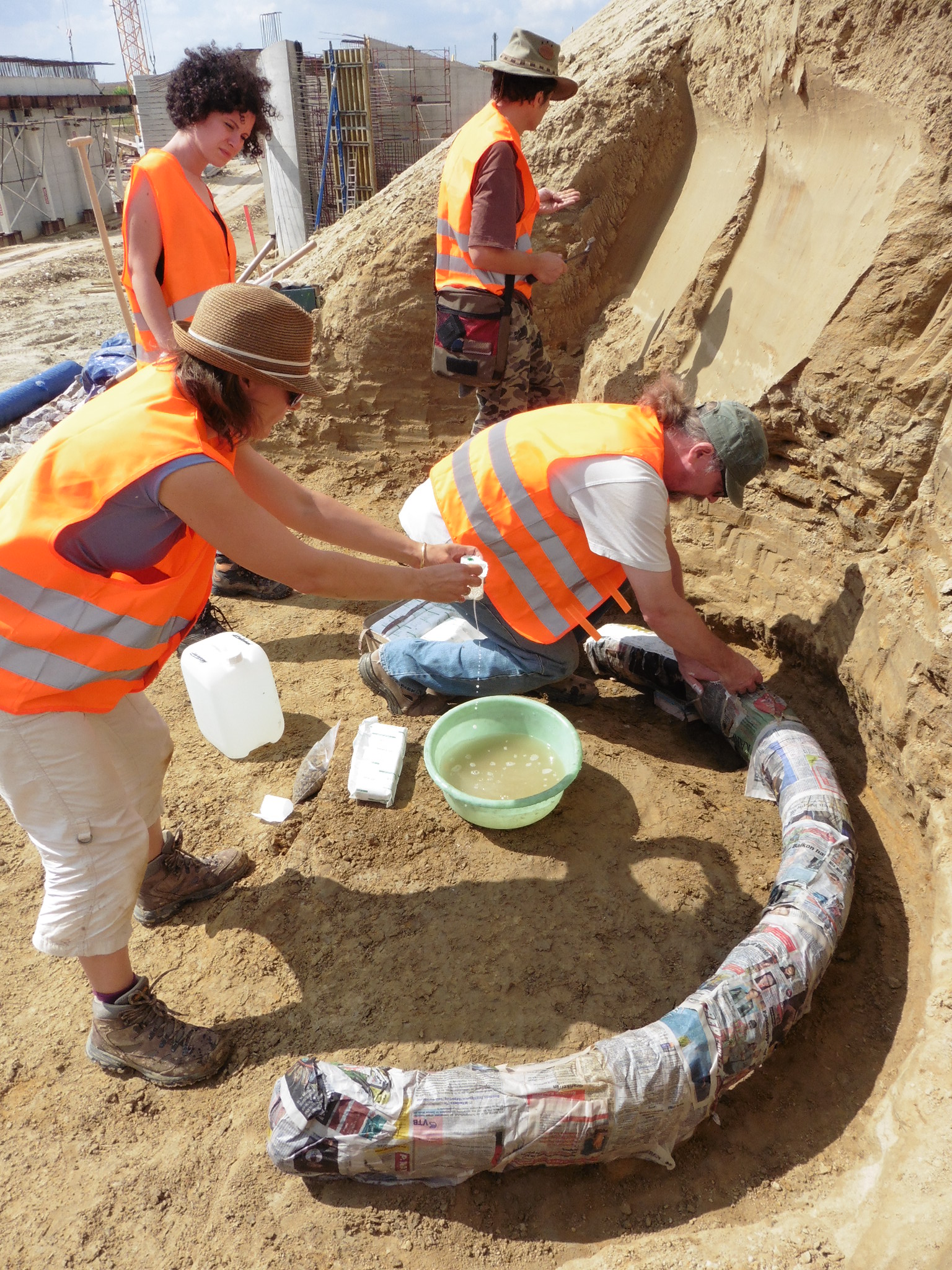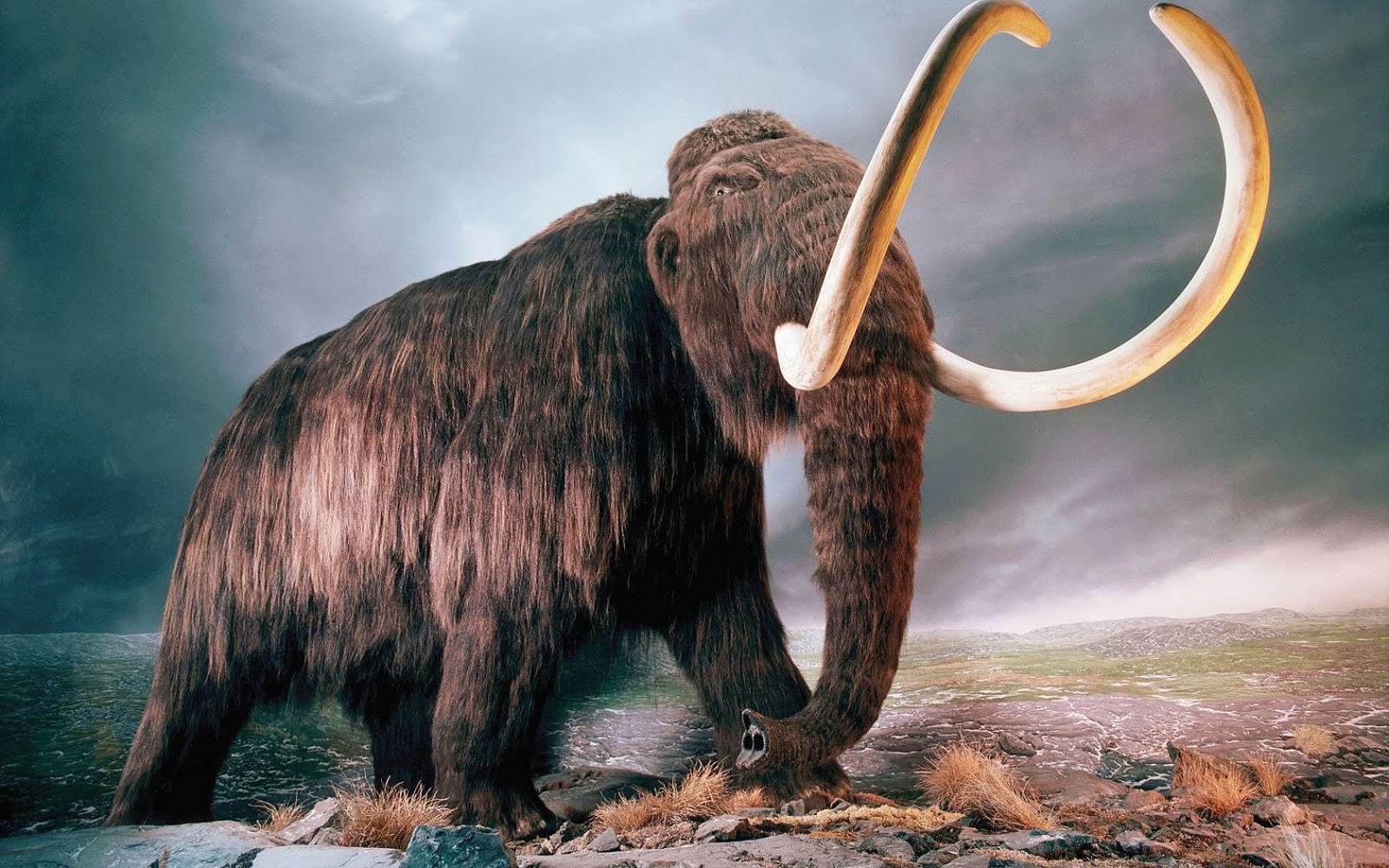
example of a woolly mammoth
Photo: prehistoricflorida
While out surveying the land for a future construction of a highway system a team of geologists discovered what would end up being two massive mammoth tusks. They were studying the sediment layers when they found what appeared to be an anomaly but ended up being the tip of one of the tusks. When the team realized what it was, and the potential significance, they knew they needed to call in the big guns. The very next day the Geology and Paleontology Department of the Vienna Natural History Museum (NHM) were sent in to head up the excavation.
The site was located in the Weinviertel Region of Austria, roughly 30 miles north of Vienna. The geologists first found the tip of the tusk in mid-Augst, just a few weeks ago. Becuase there was scheduled highway construction, the NHM’s team needed to do the job as quickly as possible. But as they started to unearth the first tusk it led to finding the other pieces of vertebrae.
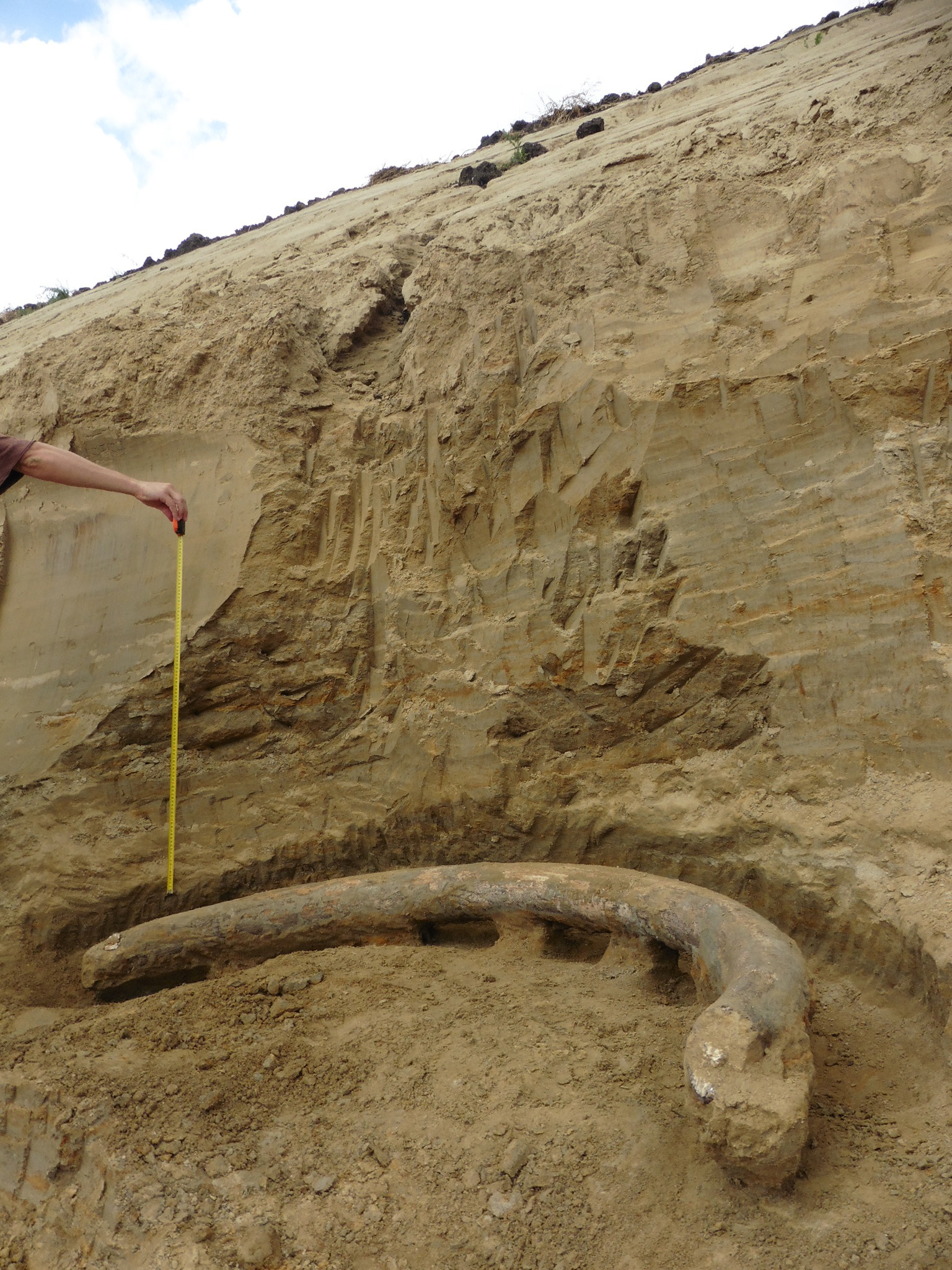
Photo: thehistoryblog
That’s when old mother nature stepped in and the weather did not want to cooperate as it began to rain for a few days. The team was convinced there was more to be found based off the first tusk being intact and in good conditon. However, the time they had left to finish the project was running low.
Finally, the rain stopped so the team was able to go back to digging and it turns out there was more to be found. A second tusk of the same size, which is leading researchers to believe that they may belong to the same animal. As maybe you can tell already, these things are huge. They both measure roughly 8.5 feet long or 2.6 meters as it was reported.
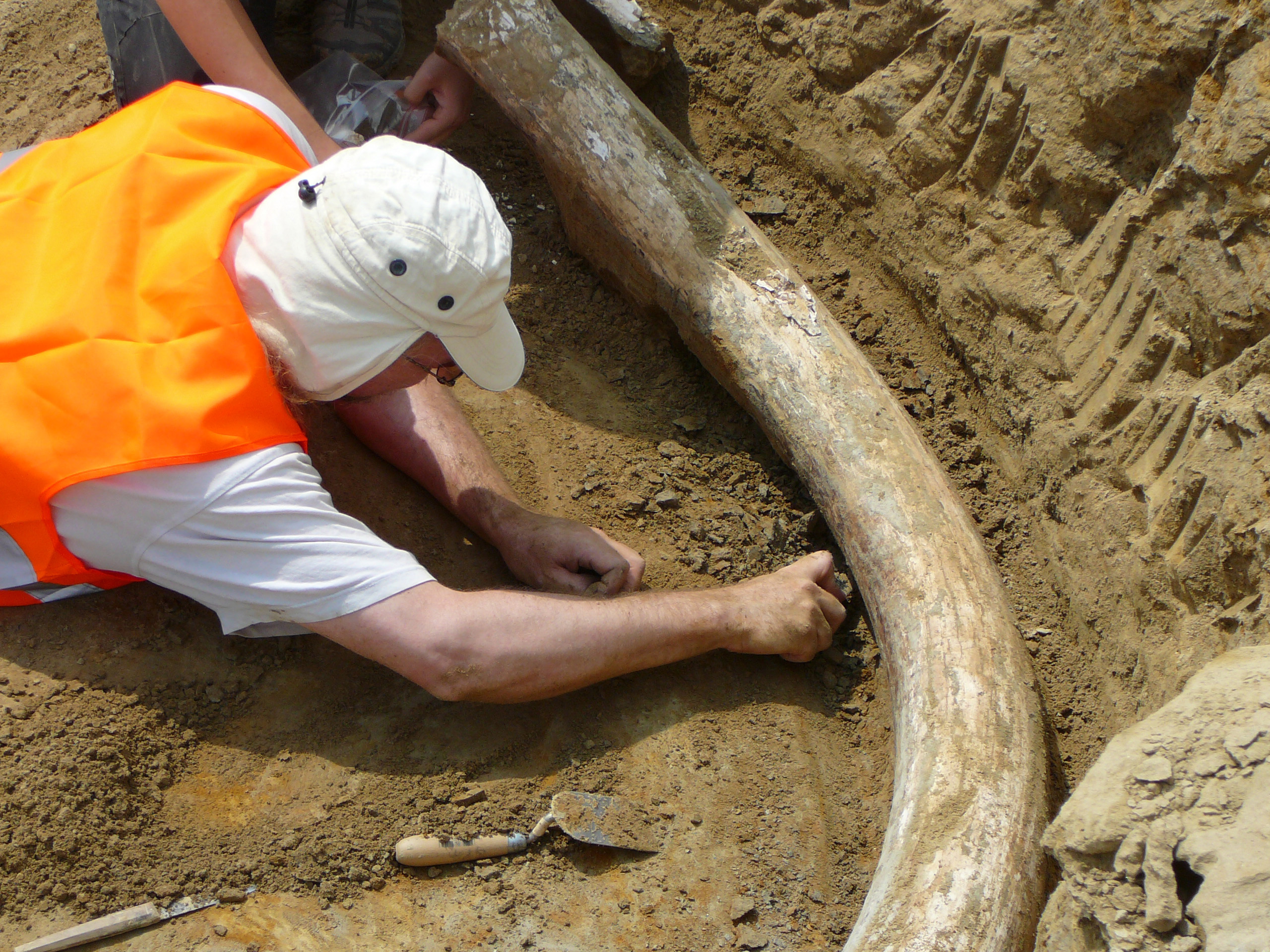
Photo: thehistoryblog
Scientists were able to guestimate that when attached to the animal they were probably closer to 10 feet long. I didn’t see anything regarding diameter, but if you look at the pictures they appear to be at least bigger than a human arm.
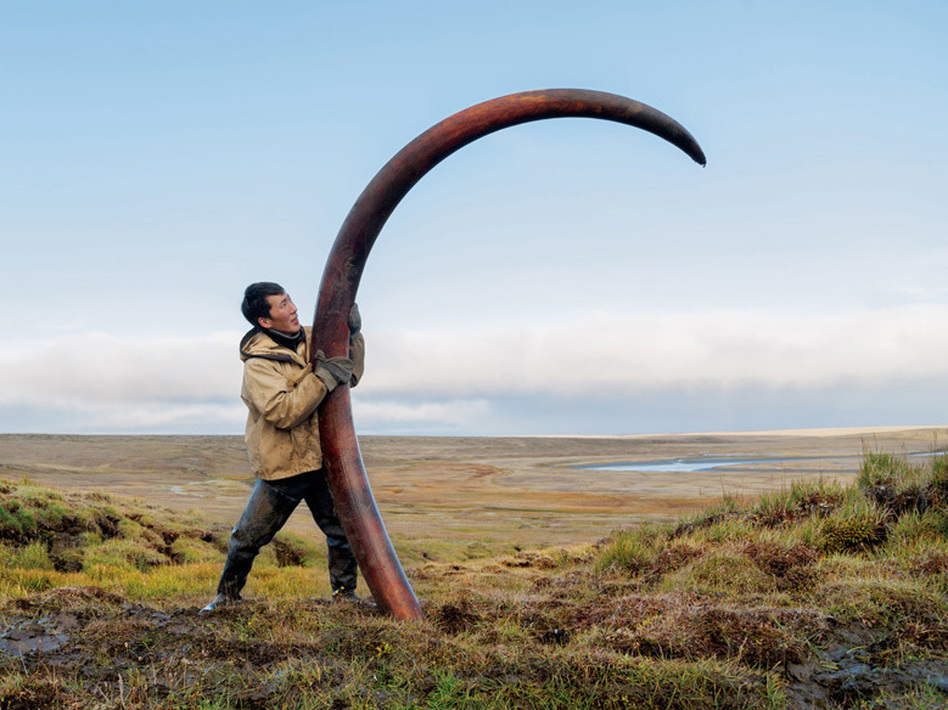
Huge mammoth tusk found in Siberia when the tundra un-thawed.
Photo: npr
There haven’t been able to identify exactly what species of mammoth that the tusks came from. Preliminary dating of the soil suggests somewhere around 1 million years ago. The most common Mammoth known by the average person is going to be the woolly mammoth and that’s probably because it’s the one we know the most about. But apparently, the woolly species lived something like 400,000 years ago which would make these tusks from a different species.
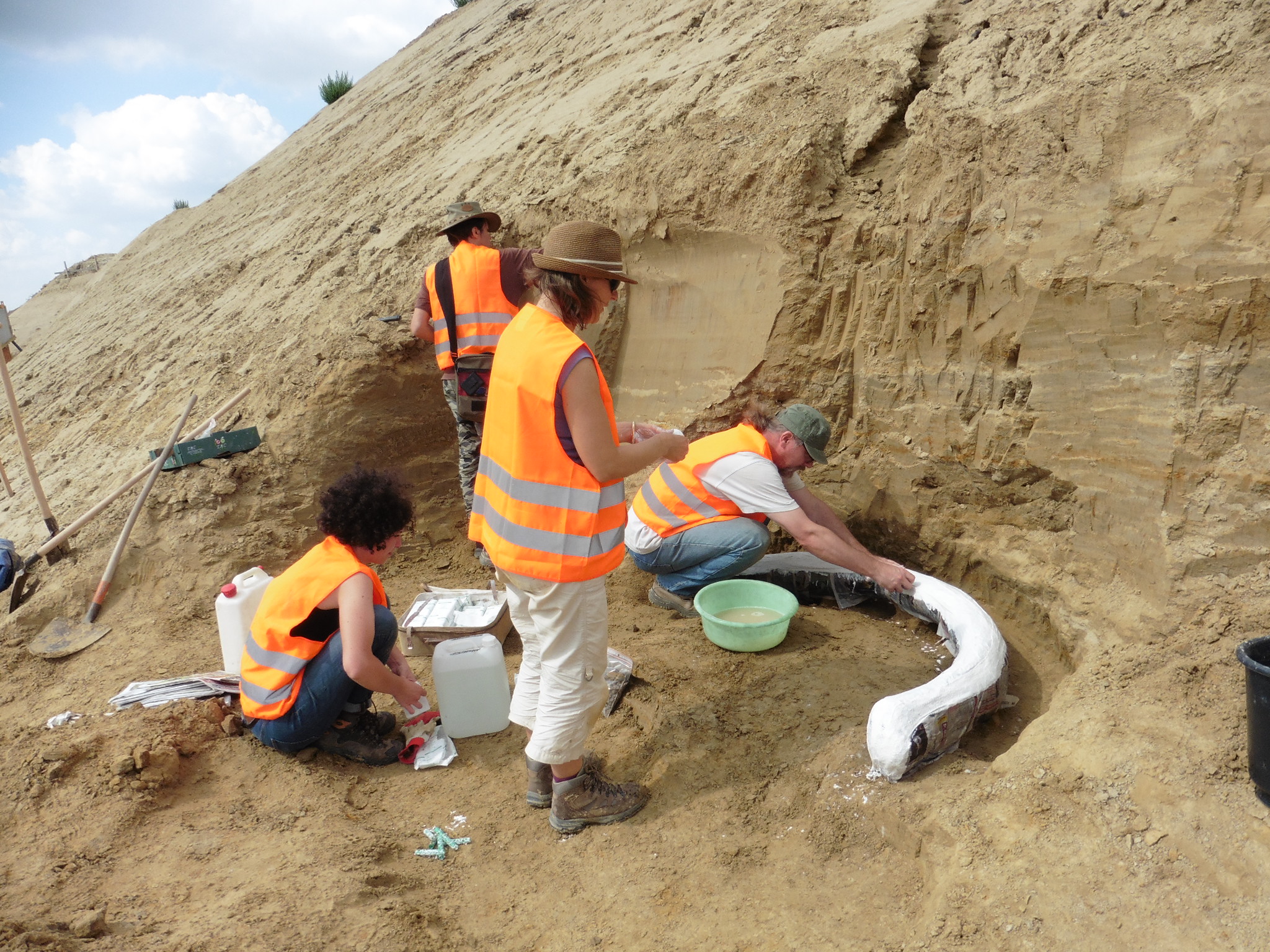
Photo: thehistoryblog
In order to stabilize the tusks for transport, they were covered plaster bandages, similar to what you would see on a cast if you broke a bone. Then wrapped them in damp newspapers which I’m guessing was meant to prevent the plaster from fully setting, but that’s my own personal speculation and trust me I’m no scientist. They were taken to the NHM in Vienna where they will be studied much further as well as being properly preserved. A brief showing is scheduled to take place at the museum November 6th but yet no word as to whether they will remain there as a permanent exhibit.
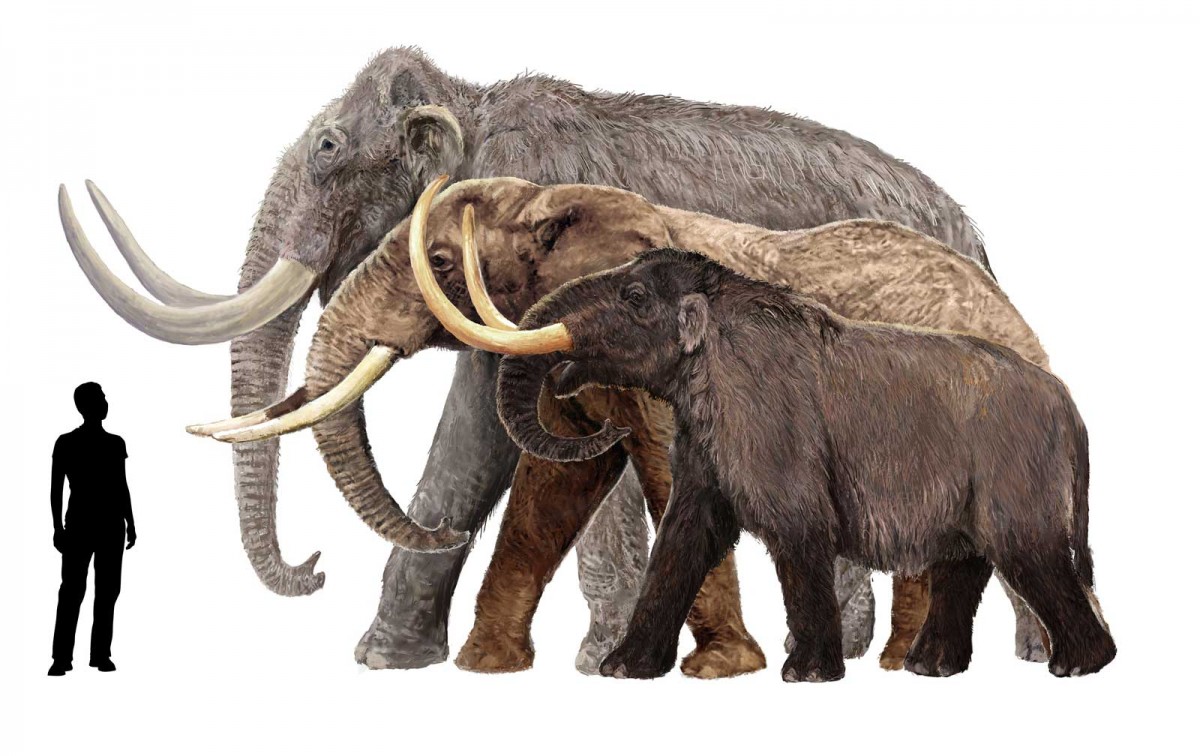
Different species of mammoth in comparison to man.
Photo: tigerseyeimports


